In Part One we looked at intersections as the key to making our streets safer. For Part Two, we will take a closer look at some specific intersections within the City of Syracuse. Now there are hundreds of intersections that could use safety upgrades, but within this post I will be looking only at three. These are not deep dive planning or engineering studies, but instead ideas based on my lived experiences using these intersections and I feel they could be improved. I will also note that there is a geographic bias to these selections, with two being on Grant Boulevard on the Northside of the City. Having grown up just off Grant Boulevard (and having written three blog posts about it - Part I, Part II, Part III), its a good stand in for many of the neighborhood main streets across the City. The third intersection sits right outside of City Hall, which should be used as a model intersection for the rest of the City to follow.
Grant Boulevard / Kirkpatrick Street
Just west of Butternut Circle (which is currently being re-built as a more traditional intersection) sits Grant Middle School, home to around 1,000 students in grades 6-8, on the corner of Grant Boulevard and Kirkpatrick Street. The intersection is controlled by a 4-way stop and sees fairly light traffic. Across the street, the old St. Francis / Gingerbread House campus sits empty, but ready for redevelopment. This intersection is representative of intersections of many around schools within the City and could set a good example for how to increase safety for kids walking to and from school.
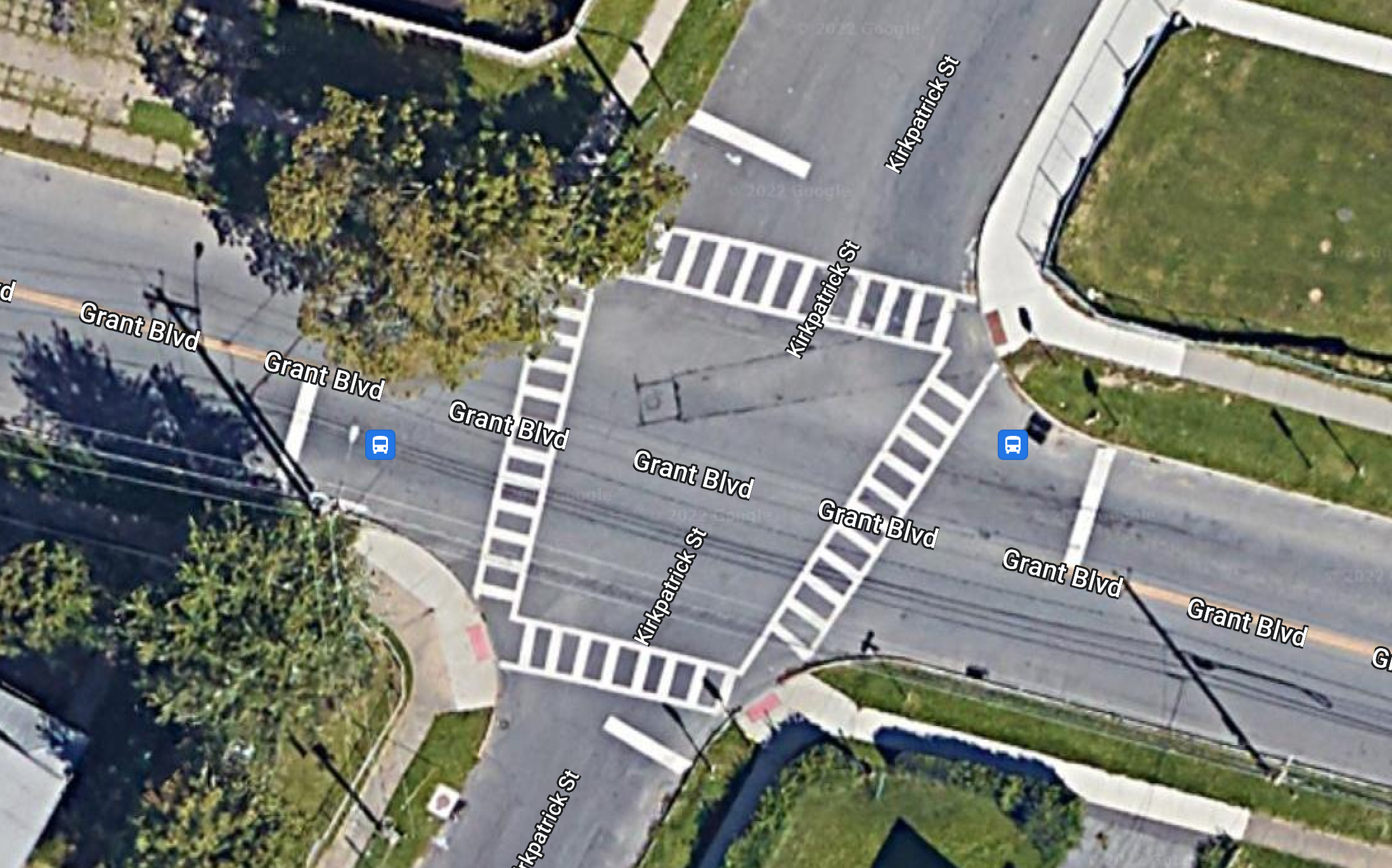
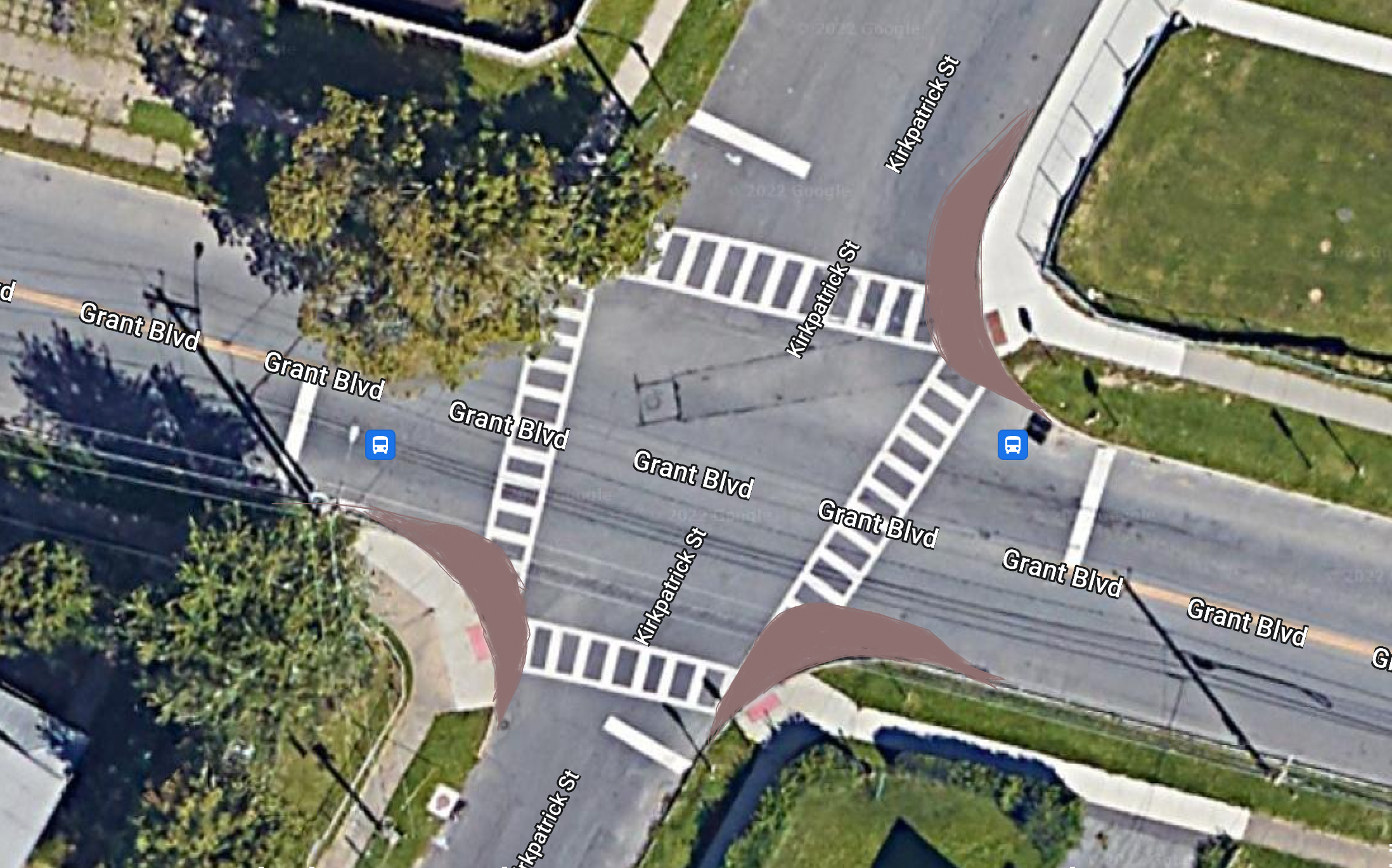
A first option, which would be cheap and easy to install, would be a painted bump out with vertical delineators at each corner. This technique has been used in cities across the country, including extensively in New York City and Hoboken, NJ. Bump outs would help define the corners and ensure people looking to cross are not obstructed by cars parked too close to the intersection. This would also narrow the visual roadway which has been shown to prompt drivers to slow down.The painted bump outs could eventually be improved to be fully curbed and including green space, similar to what can be seen along Water Street as mentioned in the previous blog post.

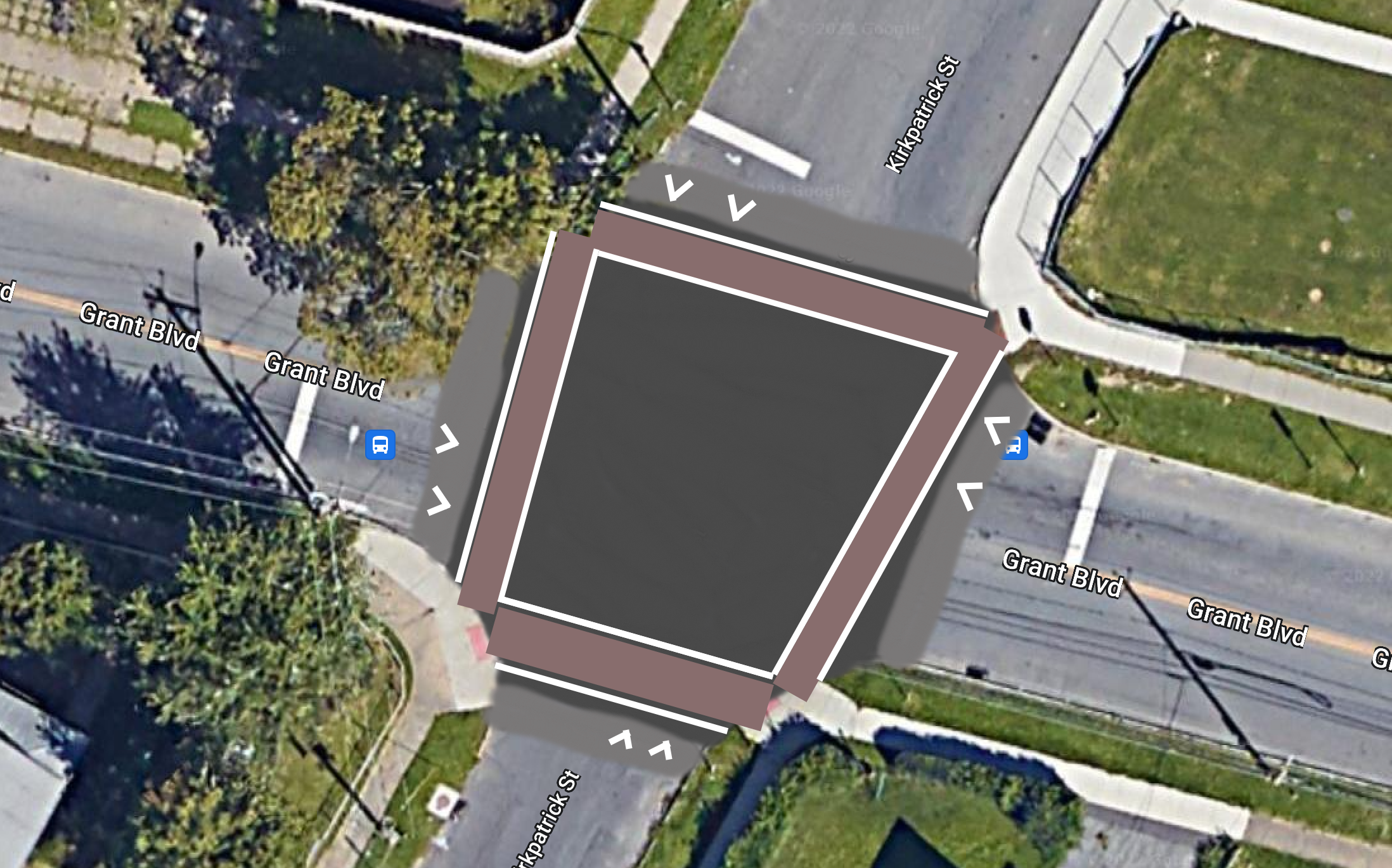
A second, more ambitious option, would be the installation of a raised intersection. The raised intersection slows traffic, similar to a speed bump/table, while also elevating people on foot so they are more visible. The crossing would be further enhanced by utilizing stamped brick pavers to mark the intersection, which acts as an additional traffic calming measure.
Both of these improvements should be explored for intersections around all schools in the City. While many of these schools are set within residential areas with fairly light traffic, they are magnets for kids and families whether school is in session or not. By emphasizing pedestrian movements in this way, the schools and the public park space that surrounds them become even safer destinations for parents to let their kids venture to on their own.
Washington Street / Montgomery Street
Washington Street reaches a width of 56 feet as it passes in front of City Hall. For a street that only carries around 4,500 vehicles per day, this is absurdly wide. To understand why Washington Street is so wide, you need to know that trains used to run straight down the center of it until the 1930s. When the train tracks were finally relocated to where I-690 presently runs, the City maintained the street at this same width, as many cities have been reluctant to reduce already built rights-of-way. And so here we are with a lightly used street in front of arguably the most important building in the City that creates uncomfortable crossing conditions for people looking to enter its doors. The City is already working to improve this entrance through blocking off a small pull-off area and painting it to create a small, welcoming plaza. But there’s still work to be done when it comes to getting people to its doors.
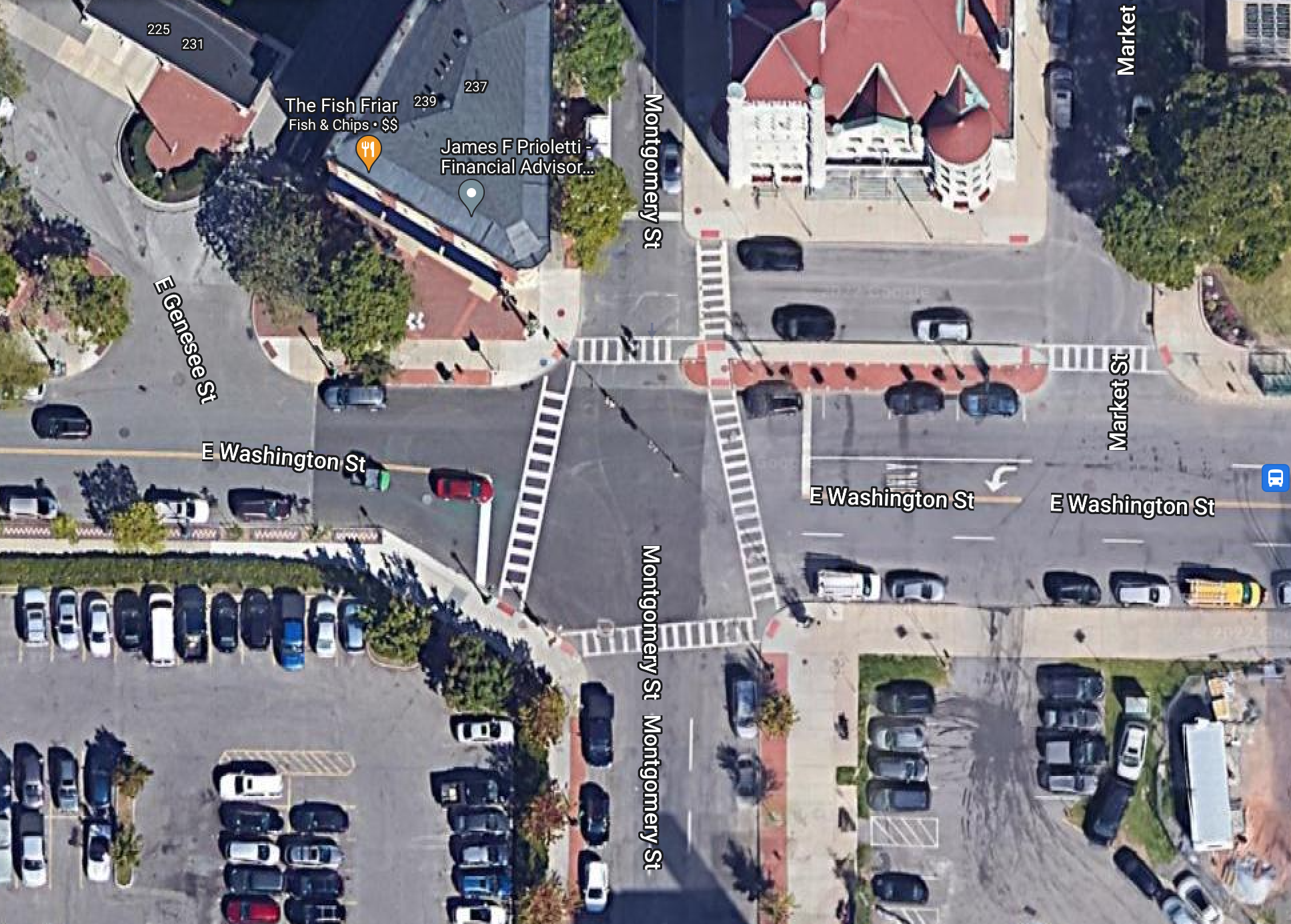
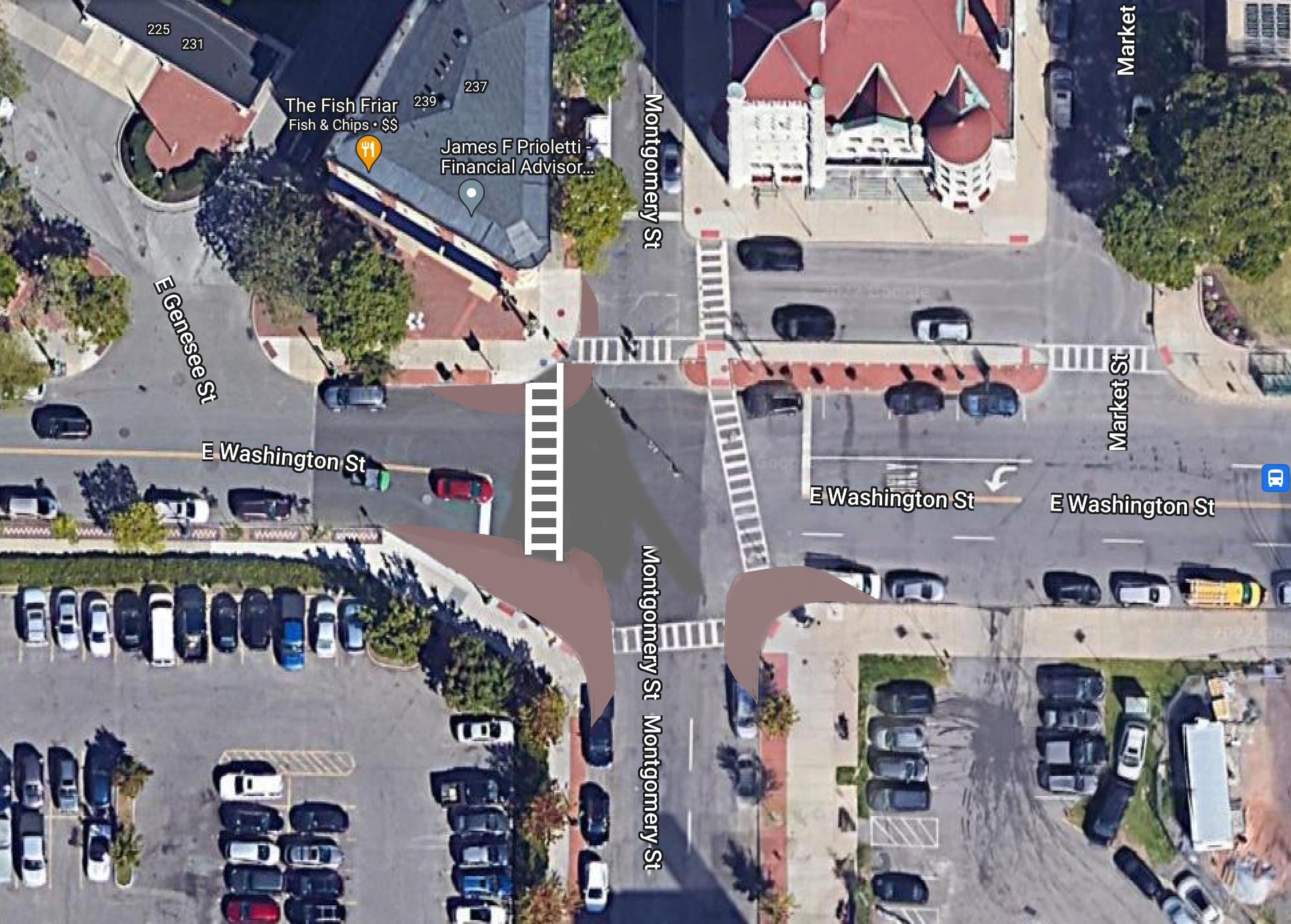
Similar to the first recommendation for Grant / Kirkpatrick, the addition of bump outs, whether painted or curbed, is vital. Currently, people waiting to cross struggle to see cars coming from the west due to the awkward angle the curb line takes. Often, its made even more difficult due to cars parked close to the crosswalks. Extending the curb out will help define where cars are allowed to park, shorten the distance people need to cross, as well as increase the visibility for everyone. This is something easy to do and would help create a more inviting approach.

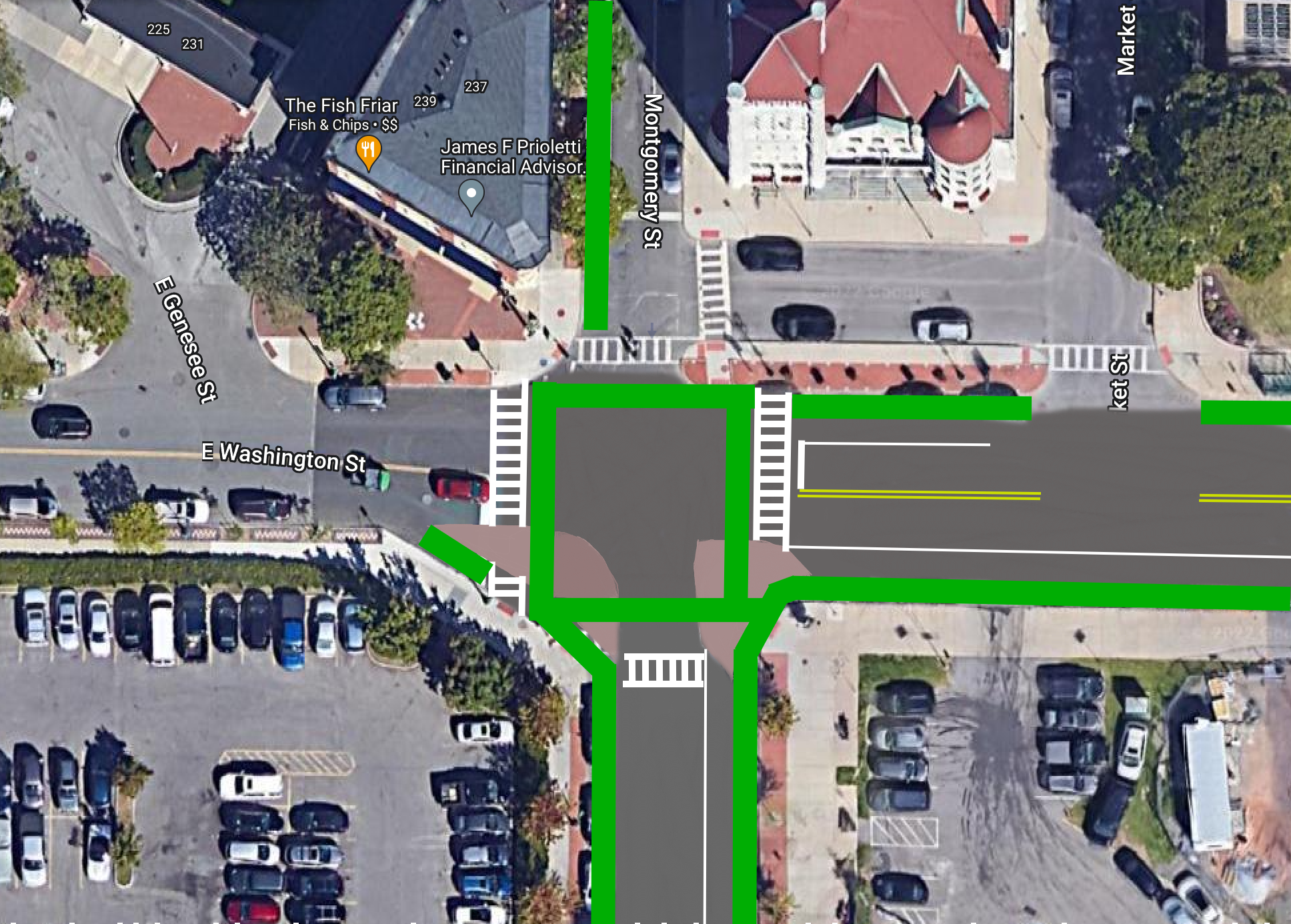
Getting more ambitious, we should go beyond just the intersection and rethink the streets that connect into it. Washington Street could easily be reduced in size for most of its length through Downtown Syracuse. Keeping the street to a single lane in each direction would allow for the addition of a parking protected bike lane along each curb. While there are bike lanes on Water Street and Fayette Street, neither of those streets offer a protected route through Downtown, and do not have the space available for protection to be added, making this an important addition to the network. At the same time, Montgomery Street, south of City Hall, is a three-lane one-way street that sees less than 3,000 vehicles per day. Along the side of City Hall, Montgomery Street is already a single lane one-way street. Keeping the street to those same dimensions would provide space for additional bike lane connections from the Empire State Trail on Water Street into the heart of Downtown. With the addition of these bike lanes, this intersection becomes a prime candidate for the City’s first protected intersection.
Grant Boulevard / Teall Avenue
In the 2021 City of Syracuse Safety Assessment, SMTC identified the Grant Boulevard / Teall Avenue intersection as a priority intersection due to its crash history. Drivers often speed to get through the light, cars move through the slip lanes quickly without looking for people on foot or bike, and the signal timings do not favor easy pedestrian crossings.
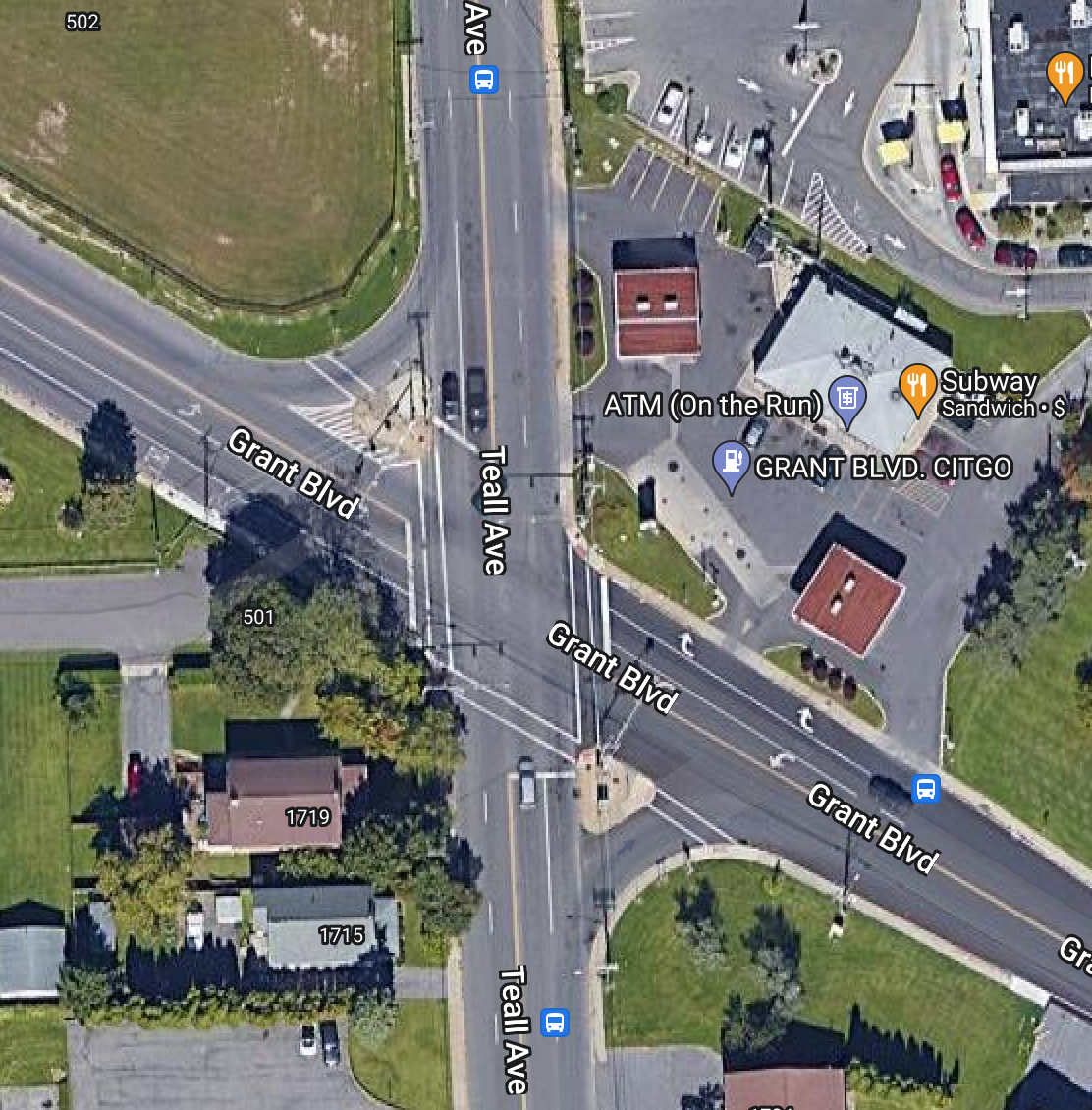
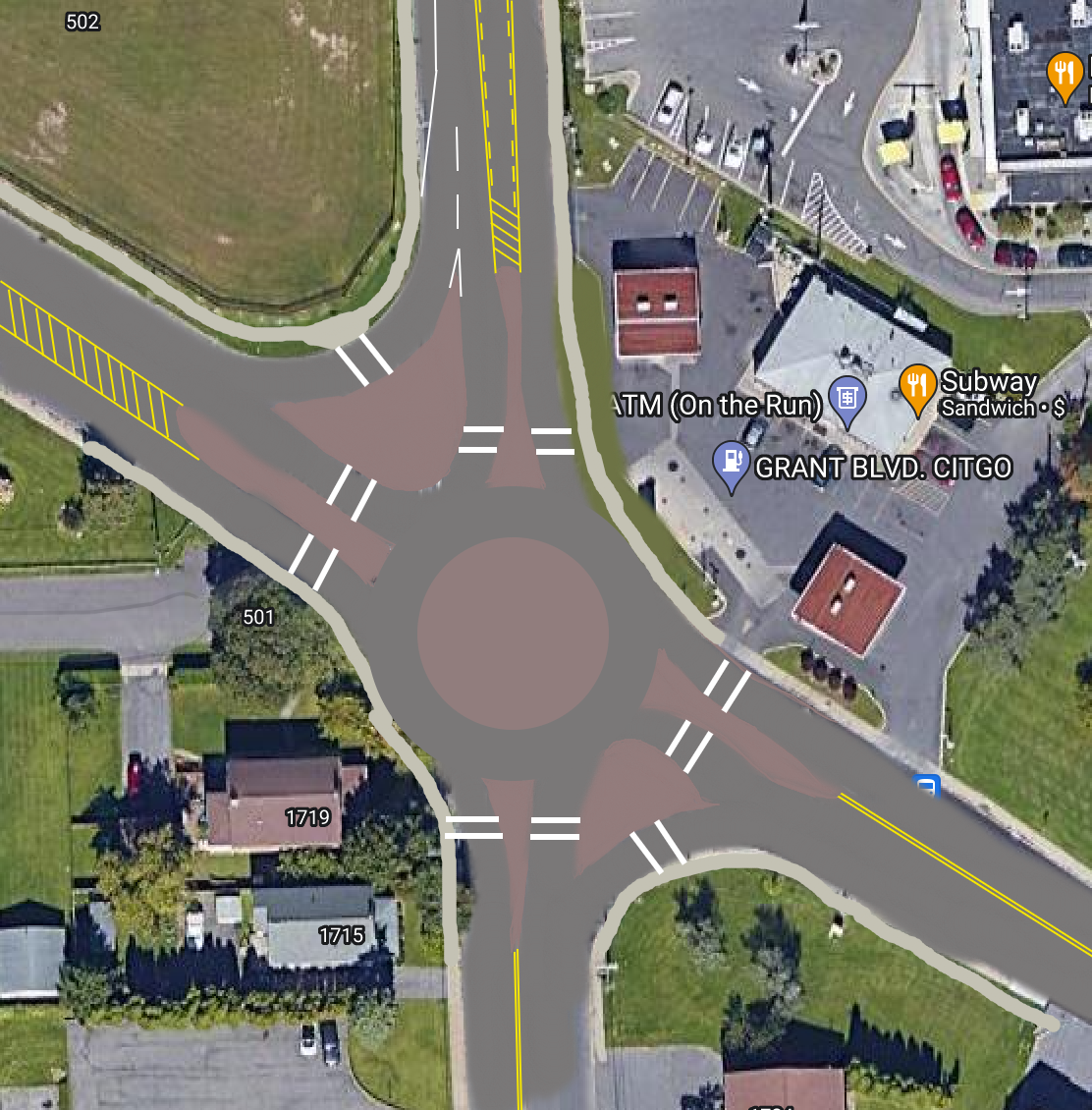
With this in mind, this could be a prime candidate for a roundabout. While the roundabout may require some minor eminent domain to fit, it would allow traffic to move freely at lower speeds and improve pedestrian access. People on foot will be able to cross shorter distances and only need to look in one direction at a time while their visibility to drivers will be increased. Cyclists, meanwhile, will be able to use roundabout in traffic with greater ease as the speeds will be much easier to manage. As part of this change, the Mobil gas station will be required to close two of its driveways, forcing drivers to use the entrances further from the intersection. This, again, will improve safety as drivers will not be competing with intersection movements and have more time to react. While the slip lanes will continue to exist, the pedestrian islands will be enlarged and the lanes will be narrowed. Sidewalks, or potentially a shared use path, should also be added along Woodlawn Cemetery’s property to increase accessibility through the area.
Beyond the intersection, the structures of the streets connecting through the intersection warrant significant changes.Teall Avenue north of the intersection is a four lane roadway with a speed limit of 35 mph. This roadway only sees a little over 5,000 cars per day, a number easily handled by one lane in each direction. Retrofitting this corridor with a road diet (one lane in each directions separated by a turning lane) would handle the traffic levels with ease and would make turning into and out of the businesses along the roadway easier. It would also provide space needed for bike lanes, but the addition of bike lanes would be better paired with a reduction curb cuts that would need more consideration.
These are just three examples of changes, both big and small, that could help improve safety and accessibility in Syracuse. Some can be applied to similar locations across the City, while others are a little more specific to the issues of that location. But the main takeaway should be that we have tools to improve how we move through our city and we should be encouraging each other to think outside the box on how to use them. Brainstorm your own ideas and share them to help start a conversation.
